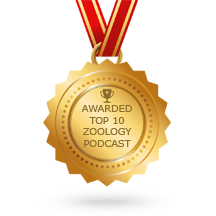Browsing the "Cenozoic" Category
The Cenozoic era, meaning “new life”, is a division of earth’s history spanning from around 66 million years ago to the present. It is subdivided into the Paleogene, Neogene and Quaternary periods. The beginning of the Cenozoic is characterised by a phase of recovery following the end Cretaceous mass extinction, and during which mammals and birds began to diversify.

Published on November 9th, 2015 | by Liz Martin-Silverstone
Crocodylomorphs today are not thought to be the most diverse group, consisting of all semi-aquatic forms of alligators, crocodiles, and gharials. However, the fossil record shows us that this group has a very long and diverse evolutionary [&hellip... Read More →

Published on October 5th, 2015 | by Liz Martin-Silverstone
The Cenozoic has often been described as the ‘Age of the Mammals’, while the Mesozoic was the ‘Age of the Dinosaurs’ which ended with the extinction of non-avian dinosaurs at the end of the Cretaceous. Mammals, [&hellip... Read More →

Published on September 16th, 2015 | by Liz Martin-Silverstone
Primate evolution is something that is heavily debated and not very well understood in palaeontology, but it is still heavily studied. In 2009, an amazing primate fossil was found in Messel, dating to approximately 47 million [&hellip... Read More →

Published on June 15th, 2015 | by Liz Martin-Silverstone
The world is currently undergoing a massive biodiversity crisis, and many people have said that we are in the next major mass extinction event, with species going extinct each day. Unfortunately, we don’t currently understand what aspects [&hellip... Read More →

Published on June 1st, 2015 | by David Marshall
The Cretaceous-Paleogene (K-Pg) mass extinction was the latest of the ‘big five’ events. Approximately 75% of species went extinct, with the most notable victims being non-avian dinosaurs. But what happened afterwards? By which methods were some [&hellip... Read More →

Published on April 15th, 2015 | by David Marshall
DNA (deoxyribonucleic acid) is a molecule that encodes the genetic information within every species of life on earth. The information contained within the sequence of base pairs determines how any given organism develops and biologically functions. [&hellip... Read More →

Published on March 1st, 2015 | by David Marshall
Insects are the most abundant and diverse group on animals on the planet today. Would they therefore also be expected to have the richest fossil record? When did they first evolve and how rapid was their [&hellip... Read More →

Published on February 1st, 2015 | by David Marshall
Brachiopods are some of the most common fossils to be found in rocks worldwide. Their thick, hard and (often) calcareous shells make them preferentially preserved in the fossil record. We probably all have found one, but [&hellip... Read More →

Published on October 16th, 2014 | by David Marshall
Ostracods are tiny crustaceans (relatives of shrimps, crabs and water-fleas), distinguished by having a shell that is easily fossilised. As microfossils, by virtue of a long and rich fossil record, ostracods are extremely useful for determining [&hellip... Read More →

Published on September 15th, 2014 | by Laura Soul
Planktonic foraminifera are single celled organisms that are highly abundant in modern oceans and a hugely important part of the Earth’s carbon cycle. Each cell builds a hard calcite ‘test’ around itself in a huge variety [&hellip... Read More →






















